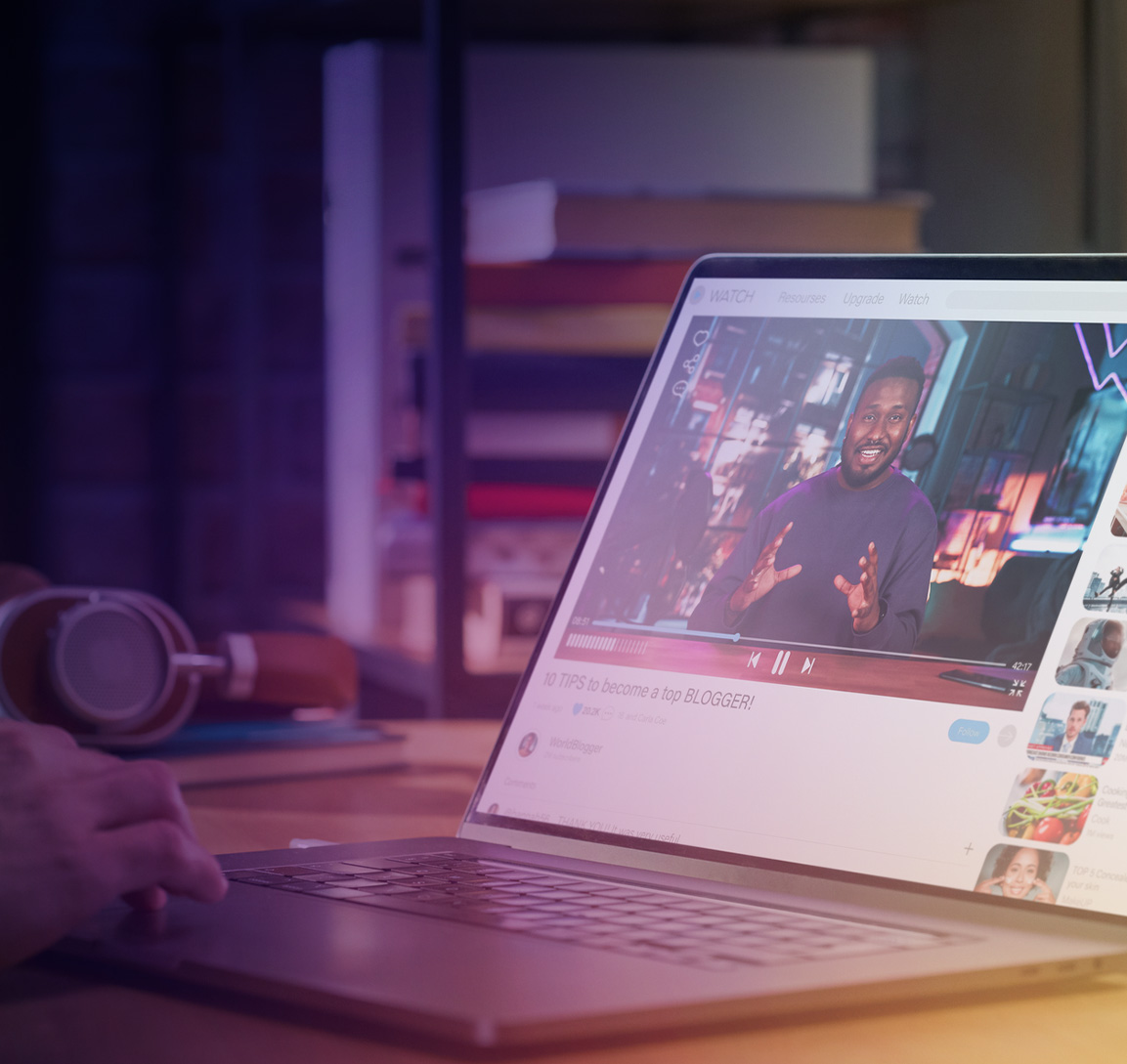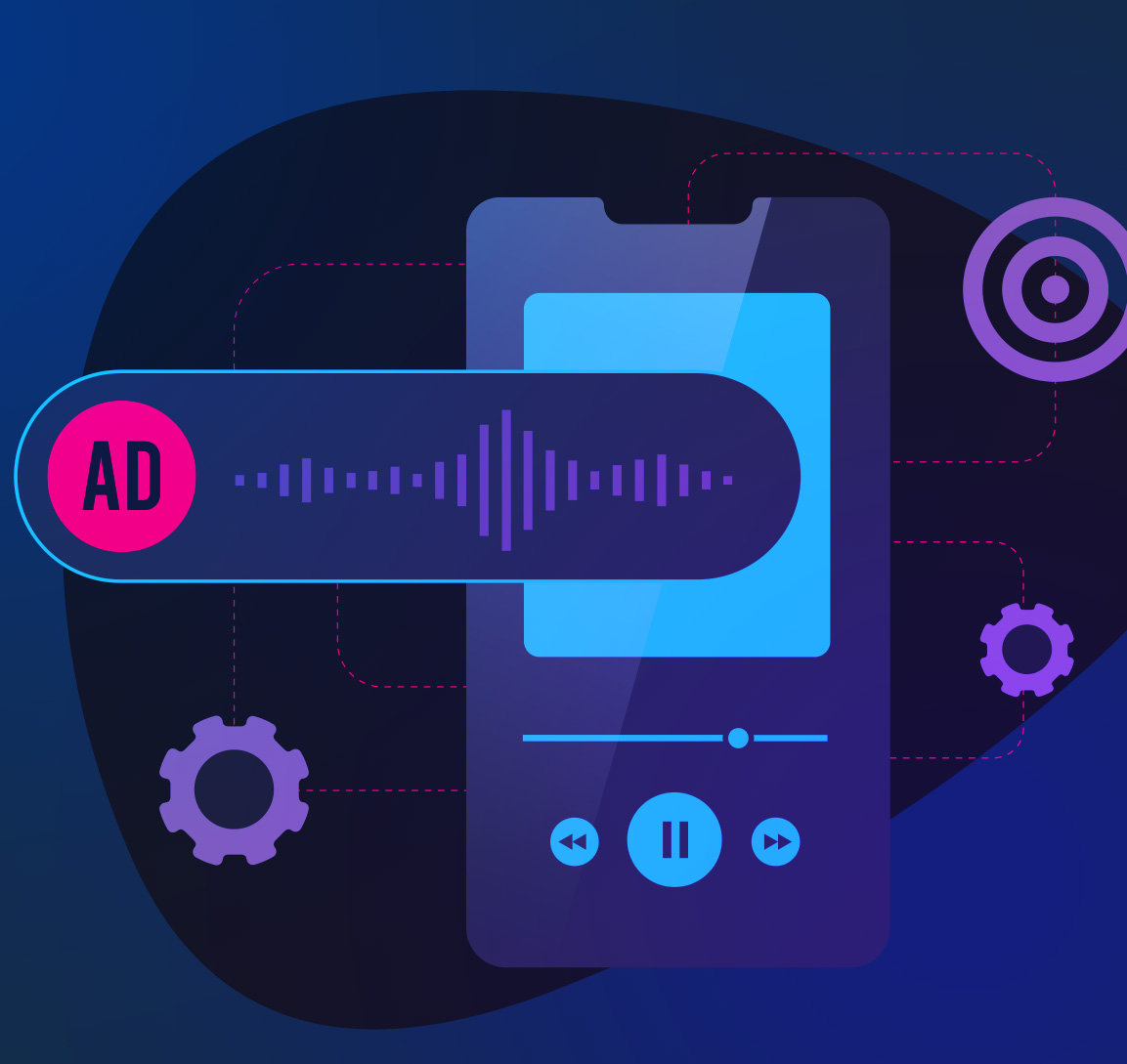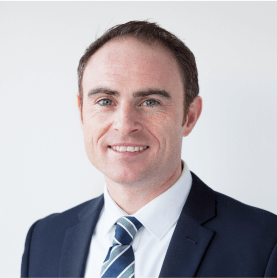The research is in: here’s the type of podcast ad that brands should shape their strategy around in 2024—and the type they should skip.
Summary:
- As the medium and listenership continues to evolve, YouTube has emerged as the most utilized platform for accessing podcasts.
- Consumers describe native YouTube advertising “annoying” and “disruptive”—but have a much more positive opinion of host-read podcast ads.
- Veritone One can help your brand make the most of the medium as you shape your digital advertising strategy for 2024.
The most popular way to consume audio… is now video.
What a year 2023 was for audio. As we return to work, many of us will start to compile our learnings from the previous year to plan on building out our strategies for the new year. Brands now know that podcast advertising will become—if it isn’t already—an essential part of their digital strategy in 2024.
Per end-of-year stats from Insider Intelligence, 41% of people in the US tune into a podcast every month and 28% of the population do it weekly, consuming around 11 episodes on average. In addition, around 144 million people listen every month.
And where is all this podcast consumption happening, you might ask? This is where YouTube enters the chat.
YouTube as a podcast platform has been growing since 2019. It is currently the most utilized podcast listening platform in the U.S., followed by Spotify and Apple. However, if you are like me, when you are immersed in a podcast on YouTube, nothing ruins the experience more than the jarring native ads that pop up and interrupt your stream. Sometimes they’re much louder than the podcast you’re enjoying; sometimes they’re just a complete shift away from your content that ruins the mood. Even when you’re able to click the “Skip Ad” button after a few seconds, the damage is done—simply put, those ads are aggravating. And I’m not the only one who thinks so.
There’s just one problem: traditional advertising is no fit for such a personal medium.
In one of 2023’s most compelling deep dives on the subject, Sounds Profitable’s Sound You Can See: Podcasting’s Video Dilemma, a study showed that native advertising is viewers’ chief complaint with accessing their favorite content on the platform. Yep, turns out no one is a fan of those annoying interruptions.
In fact, the top five terms used by my fellow ad skippers to describe this type of spot were “annoying” (43%), “disruptive” (40%), “too frequent” (26%), “irrelevant” (26%), and “too long” (21%)—hardly the headspace in which your brand wants to reach consumers.
This presents a challenge for brands advertising on YouTube, especially when we consider that the authentic connection podcast hosts can foster with their listeners is the very foundation on which the medium’s success was built.
With over $2 billion in placed media of proprietary host-read ad performance data, Veritone One can confirm the following:
- Listeners have a better opinion of and pay more attention to ads that are host-read.
- Hearing the host talk about a product in their own voice reinforces the direct link between the sponsorship and the podcast.
- That being said, podcast ads delivered by the host come across as more of an intimate recommendation than a paid advertisement, allowing a brand to build credibility in an organic way.
- Host-read ads within podcasts are considered less jarring than traditional radio or TV ad breaks; because they tend to feel more like content, users are less likely to skip them.
That’s why our ethos at Veritone One is to create ads that enhance, not diminish, the personal connections between podcast hosts and their listeners. Hearing what hosts have to say about their favorite products is just another way to get closer to them—and the hundreds of campaigns we’ve scaled successfully just go to show how lucrative that can be for your brand.
Host-read ads to the rescue!
The same Sounds Profitable study above revealed an interesting dynamic: video and podcast consumers are not by any means mutually exclusive. Oftentimes, they are the same people. And while they consider native ads on YouTube intrusive, viewers express positive sentiment towards ads within podcasts delivered by hosts or other personalities—say, a fan-favorite producer—associated with the show.
And this is especially true for Premium users: close to 90% of those consumers said that they don’t mind host-read ads in their favorite podcast, compared to only 6% who dislike them. The top three attributes these viewers used to describe host-read podcast ads were “informative” (33%), “interesting” (26%), and “relevant” (25%).
As you can see, it’s not the advertisement itself that rankles listeners, but how it’s executed. The right type of podcast ad, fueled by strategically crafted messaging and a targeted media buy, makes all the difference. And that’s where Veritone One enters the chat.
In conclusion, not all podcast ads are created equal.
As we navigate the dynamic landscape of audio in 2024, the surge in audio consumption, particularly on platforms like YouTube, brings both opportunities and challenges to the savvy advertiser. Here at Veritone One, our teams understand the evolving landscape of audio, as well as how best to continue harnessing the power of podcasting’s authentic and influential nature to create meaningful connections with our audience.
The future of audio is exciting, and by aligning our strategies with the preferences of the evolving consumer, we can make 2024 a landmark year for audio advertising. Trust me: you won’t want to skip this.
Edited by Rubi Mora
You May Also Like
Meet the Author

Kedric Walls

Strategist
Kedric is a Strategist here at Veritone One with a passion for all things media. Throughout his professional career, he has learned that there is nothing wrong with asking questions to ensure you are getting to the bottom line. His background in direct response and performance advertising is all about sales strategy, campaign effectiveness, and knowledge acquisition. A favorite quote that he lives by: "Success is not final; failure is not fatal - it is the courage to continue that counts!" - Winston Churchill

Join Our Monthly Newsletter!
Get insights from the experts in AI-powered advertising for brands and creators





